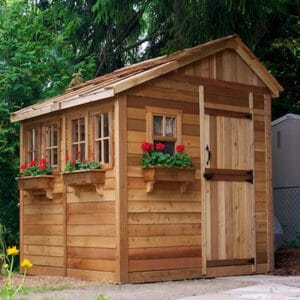No products in the cart.
January 3, 2024
Growing Minds: Enhancing Education with Outdoor Living Today’s Garden Products
In recent years, the connection between nature and education has become increasingly evident, and schools are now exploring innovative ways to integrate outdoor experiences into the learning environment.
One impactful initiative gaining popularity is the setup of garden beds for students. Outdoor Living Today, a leading provider of quality outdoor products, offers an ideal solution for schools looking to cultivate a green thumb culture within their educational spaces.
The Educational Benefits of School Gardens:
School gardens offer a myriad of educational benefits, fostering a hands-on approach to learning that goes beyond traditional classroom settings. From science and biology lessons to practical math applications and environmental studies, students engaged in gardening experience real-world connections that enhance their academic experience.
Guide to Setting Up Garden Beds for Schools
Here’s a step-by-step guide to help you set up garden beds for your students:
1. Plan and Design:
- Identify a suitable location for the garden beds. Consider factors like sunlight, accessibility, and water availability.
- Decide on the size and number of garden beds based on the available space and the number of students involved.
- Involve teachers, students, and possibly local gardening experts in the planning process to gather ideas and insights.
2. Get Permissions:
- Obtain necessary permissions from school authorities, ensuring compliance with any regulations or guidelines.
- Communicate the project’s educational benefits to gain support from the school community.
3. Gather Supplies:
- Purchase or gather essential supplies, including raised garden beds, soil, compost, seeds, and basic gardening tools.
- Consider reaching out to local businesses or community members for potential donations or sponsorships.
4. Educational Curriculum Integration:
- Integrate the garden project into the school curriculum, connecting it to various subjects like science, math, and environmental studies.
- Develop lesson plans that align with the gardening activities to enhance students’ learning experiences.
5. Student Involvement:
- Foster student involvement by establishing a gardening club or incorporating garden-related projects into existing classes.
- Assign responsibilities to students, such as watering, weeding, and observing plant growth, to promote a sense of ownership.
6. Plant Selection:
- Choose plants that are suitable for your region and the available growing season.
- Consider incorporating a variety of vegetables, herbs, and flowers to diversify the learning experience.
7. Provide Learning Resources:
- Set up a small library or online resources with books, videos, and articles on gardening to supplement classroom learning.
- Invite local experts or horticulturists for workshops or guest lectures to share practical insights.
8. Maintenance and Care:
- Establish a routine for garden bed maintenance, including watering, weeding, and pest control.
- Teach students about the importance of sustainable and eco-friendly gardening practices.
9. Harvest and Celebrate:
- Plan a harvest celebration to mark the culmination of the gardening season.
- Incorporate harvested produce into school meals or organize a farmers’ market to involve the broader community.
10. Evaluation and Reflection:
- Conduct periodic evaluations to assess the impact of the garden beds on student learning and engagement.
- Encourage students to reflect on their experiences, noting any challenges and successes.
By following these steps, schools can create an interactive and educational environment through garden beds, fostering a deeper connection between students and the natural world.
January 3, 2024
-

-
 On SaleSale!%Off13Save $540540$13%540$On SaleSale!%Off13Save $550550$13%550$On SaleSale!%Off12Save $445445$12%445$On SaleSale!%Off13Save $550550$13%550$
On SaleSale!%Off13Save $540540$13%540$On SaleSale!%Off13Save $550550$13%550$On SaleSale!%Off12Save $445445$12%445$On SaleSale!%Off13Save $550550$13%550$ -
 On SaleSale!%Off13Save $305305$13%305$On SaleSale!%Off11Save $262262$11%262$On SaleSale!%Off13Save $305305$13%305$
On SaleSale!%Off13Save $305305$13%305$On SaleSale!%Off11Save $262262$11%262$On SaleSale!%Off13Save $305305$13%305$ -
 On SaleSale!%Off26Save $130130$26%130$On SaleSale!%Off26Save $130130$26%130$
On SaleSale!%Off26Save $130130$26%130$On SaleSale!%Off26Save $130130$26%130$ -

-
 On SaleSale!%Off25Save $2,1902190$25%2190$On SaleSale!%Off25Save $2,0382038$25%2038$On SaleSale!%Off25Save $1,8881888$25%1888$On SaleSale!%Off25Save $2,1902190$25%2190$
On SaleSale!%Off25Save $2,1902190$25%2190$On SaleSale!%Off25Save $2,0382038$25%2038$On SaleSale!%Off25Save $1,8881888$25%1888$On SaleSale!%Off25Save $2,1902190$25%2190$










